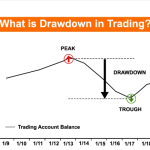
By ATGL
Updated September 15, 2024
The Dow Jones Industrial Average (DJIA) serves as a powerful tool for guiding various investment strategies, offering investors insights into the performance of some of the largest and most stable companies in the U.S. economy. As a benchmark index that tracks 30 blue-chip stocks across multiple sectors, the DJIA provides a snapshot of overall market health and helps investors make informed decisions. Whether through long-term buy-and-hold approaches, dividend investing, or more dynamic strategies like sector rotation and momentum investing, the DJIA plays a pivotal role in shaping investment portfolios and managing risk. Below are several ways the DJIA influences and shapes different investment strategies.
1. Buy-and-Hold Strategy
One of the most common strategies associated with the DJIA is the buy-and-hold strategy, where investors purchase stocks or funds that track the index and hold them for the long term. The DJIA consists of blue-chip companies with a history of stability, profitability, and dividend payments. Investors who follow this strategy are banking on the fact that these large companies will continue to grow over time, providing consistent returns.
The buy-and-hold strategy works well with the DJIA because the index reflects the performance of well-established companies that are less prone to volatility than smaller or less mature firms. Over decades, the DJIA has demonstrated a strong upward trajectory, despite occasional market corrections or downturns. For long-term investors, holding DJIA-related assets allows them to benefit from the overall growth of these companies while avoiding the risks of short-term trading.
2. Dividend Investment Strategy
Another popular approach when investing in the DJIA is the dividend investment strategy. Many of the companies included in the DJIA pay regular dividends, making it an attractive option for income-seeking investors. A dividend-focused strategy involves investing in high-dividend stocks within the DJIA, such as Coca-Cola (KO), Johnson & Johnson (JNJ), and Procter & Gamble (PG), which have a history of paying reliable dividends.
Dividend investors often look for companies in the DJIA that not only offer a high dividend yield but also have a track record of growing their dividend payments over time. This provides both regular income and the potential for long-term capital appreciation. Investing in the DJIA as part of a dividend strategy can also serve as a hedge during periods of market volatility, as dividends can provide returns even when stock prices fluctuate.
3. Index Investing with ETFs
A straightforward way to invest in the DJIA is through index investing, particularly with Exchange-Traded Funds (ETFs) that track the performance of the DJIA. One of the most popular ETFs for this purpose is the SPDR Dow Jones Industrial Average ETF (DIA), which allows investors to buy shares that mirror the movements of the DJIA without having to purchase individual stocks.
Index investing is a low-cost strategy, as ETFs generally have lower expense ratios compared to actively managed funds. By investing in an ETF that tracks the DJIA, investors get exposure to the overall performance of the 30 companies in the index, benefiting from diversification across sectors. This strategy is ideal for investors who want to match the market’s performance rather than attempting to outperform it through active stock selection.
4. Sector Rotation Strategy
The DJIA covers various sectors, including technology, finance, consumer goods, healthcare, and industrials, making it useful for implementing a sector rotation strategy. This strategy involves shifting investments between sectors based on economic cycles. For instance, during periods of economic expansion, sectors like technology or industrials tend to outperform, whereas consumer staples or healthcare may do better in times of economic uncertainty.
Investors using a sector rotation strategy may focus on buying stocks or ETFs that represent sectors of the DJIA that are expected to perform well under current economic conditions. The DJIA can serve as a guide for understanding which sectors are thriving and which are lagging, helping investors make more informed decisions about when to shift their portfolios.
5. Contrarian Investing
Some investors use the DJIA as a basis for a contrarian investment strategy—buying when others are selling and selling when others are buying. This strategy is grounded in the belief that the market often overreacts to short-term news or economic events, creating opportunities to buy DJIA stocks at a discount when sentiment is negative. For example, if the overall market (including the DJIA) drops due to a broad economic scare, a contrarian investor might see this as an opportunity to buy quality companies in the index at lower prices.
This strategy can be risky, as it requires excellent timing and a strong understanding of market fundamentals. However, it can be particularly effective with the DJIA, given that the companies in the index are generally financially sound and likely to recover from short-term downturns.
6. Momentum Investing
Momentum investors seek to capitalize on market trends by investing in stocks that are moving upwards in price, with the belief that they will continue to rise. The DJIA can play a central role in a momentum investment strategy, as it includes well-performing, large-cap stocks that can be the leaders in bullish markets.
Momentum investors may focus on the strongest performers in the DJIA, such as technology companies like Apple (AAPL) or Microsoft (MSFT) when these stocks are experiencing upward momentum. This strategy, however, requires continuous monitoring, as momentum can shift quickly.
7. Hedging and Risk Management
For investors with significant exposure to the DJIA, hedging can be a valuable strategy for managing risk. Hedging strategies may involve using options or futures contracts related to the DJIA to protect against potential losses. For instance, if an investor is concerned about a market downturn but does not want to sell their DJIA holdings, they could buy a protective put option on the DJIA or an ETF that tracks it.
Hedging allows investors to maintain their long-term positions in DJIA stocks while mitigating the risk of short-term volatility. It’s commonly used by institutional investors or those with large portfolios tied to the index.
Conclusion
The DJIA plays a pivotal role in shaping a wide variety of investment strategies, ranging from long-term buy-and-hold approaches to short-term momentum plays. Whether investors are looking for steady income through dividends, diversification through index funds, or active trading opportunities, the DJIA offers a versatile set of opportunities. Understanding how the DJIA behaves in different market environments and leveraging it within a strategy tailored to individual financial goals can help investors make more informed and effective investment decisions. Join Above the Green Line and find out which investment strategy meets your goal.






